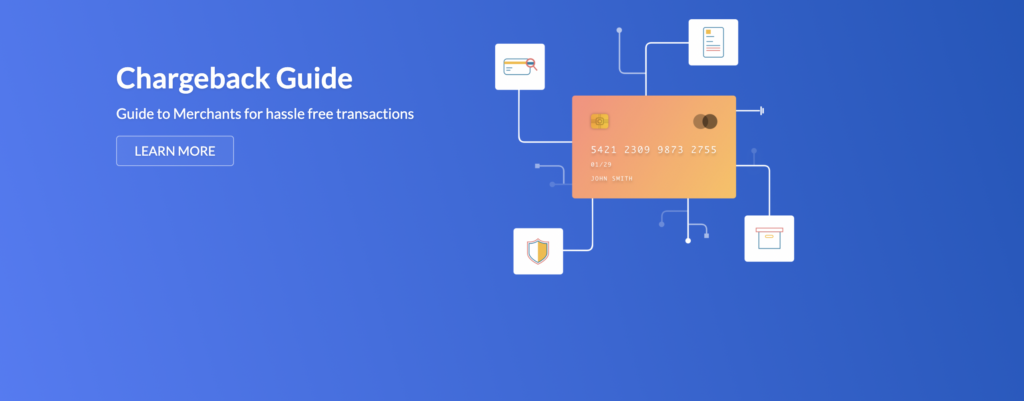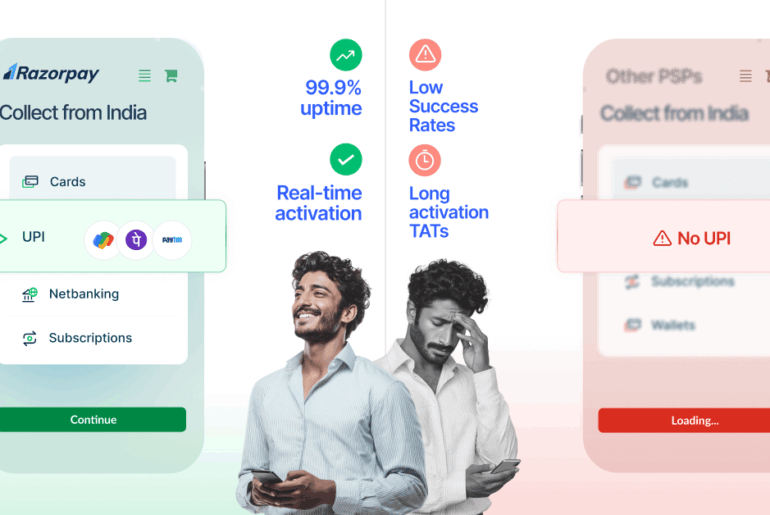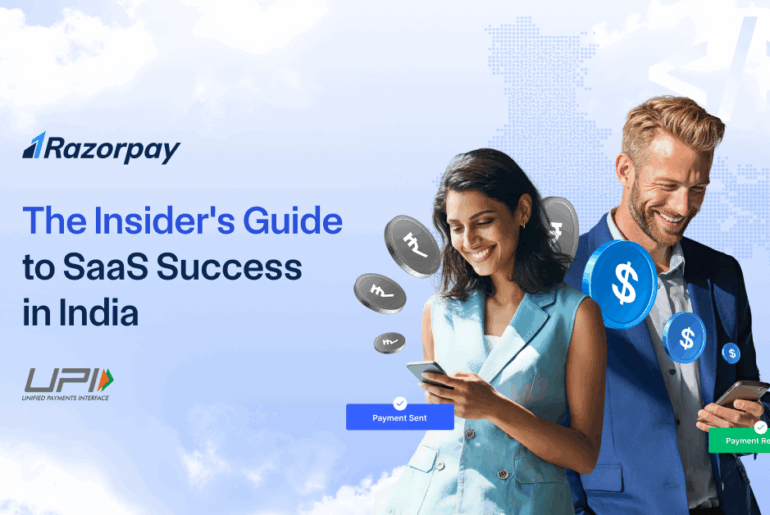Table of Contents
What is a Chargeback?
Why Chargeback?
There could be several reasons for chargeback against a particular transaction. A list of the most common reasons for chargeback is listed here.
Generally, chargebacks can be associated with unsatisfactory customer service/product or poor service delivery experience. Chargebacks can also be filed if the customer suspects fraudulent activity on their card.
Why avoid Chargebacks?
It is best to avoid any kind of chargeback, as banks and card networks can label your business as a fraudulent/high risk business, hampering your image. A customer has a timeframe of 120 days to file a chargeback, which means your sales are reversible for that time period.
A high number of chargebacks can lead to the banks holding remittances for the business as well. The worst case scenario could be a ban of online payment services imposed upon the business.
What’s the process to resolve a chargeback?
Chargebacks should be considered high priority issues due to the involvement of risk teams of both the customer’s bank as well as our partner banks. At Razorpay we have a process to resolve disputes/chargebacks.
Roles of various stakeholders in Chargeback process
A chargeback involves the customer, merchant, their respective banks and the networks as well. Below are the key roles and responsibilities of each stakeholder,
1. The Customer’s Bank (Issuing Bank)
- The chargeback process begins and ends with the issuing bank. When the customer disputes a charge, they contact their bank (one that issued their credit/debit card or UPI and other payment methods). This bank is called the issuing bank.
- The issuing bank reviews the customer’s claim to see if it’s valid according to the card network’s/UPI rules. If they believe the claim has merit, they raise a chargeback and will provisionally credit the customer’s account for the disputed amount.
- The issuing bank is the primary reviewer in the dispute. If the merchant’s evidence is deemed proper and satisfactory, they will accept the chargeback. This will result in the reversal of the provisional credit posted to the customer’s account and the disputed charges will be reversed in our favor. If the issuing bank is not satisfied with the evidence provided, then they will raise the next level of chargebacks (Pre-arbitration & Arbitration).
What this means for you, the merchant?
Your primary goal in a chargeback is to provide compelling evidence to Razorpay that the transaction was legitimate and you fulfilled your end of the concord. All communication will go through us. We will verify the evidence and represent it to your acquiring bank on your behalf.
2. Your Payment Provider (Acquiring Bank/Payment Aggregator)
- The acquiring bank is the financial institution that is partnered with payment aggregator (Razorpay) to facilitate acceptance of payments through various payment methods.Razorpay acts as the intermediary between you and the acquiring bank, simplifying the process and communication channel for you.
- When a chargeback is filed, the issuing bank notifies your acquiring bank and the acquiring bank notifies Razorpay, your payment aggregator. We, Razorpay in turn, will notify you of the chargeback and temporarily debit the disputed amount from your account till the dispute is resolved.
- Razorpay will provide you with the details of the chargeback, including the reason code. Accordingly, you will be required to provide supporting evidence, which we will validate and then forward to your Acquiring Bank. The Acquiring Bank will then submit this evidence to the Issuing Bank through the respective networks.
What this means for you, as a merchant?
Razorpay is your main point of contact throughout the chargeback process. We will provide the platform and guidance for you to submit the documents and will support you in representing the chargebacks appropriately. So that you focus on your core business.
3. The Card Network (Visa, Mastercard, American Express, NPCI, UPI etc.)
- The card network (e.g., Visa, Mastercard) acts as the central hub connecting the issuing and acquiring banks and payment aggregator. They establish the rules and the infrastructure for the entire chargeback process.
- During a dispute, the card network’s system is used to pass information and documents between the issuing and acquiring banks. Accordingly, the acquiring banks further communicate to Razorpay.
- If the Issuing bank remains unconvinced after the document is submitted in the chargeback level and also at the second chargeback (pre-arbitration) level, the issuing bank can further escalate the case by raising an arbitration. At the Arbitration stage, the Arbitration committee appointed by the Networks is the final decisioning authority. This committee reviews the case in totality and provides the final verdict. We do not have a contest right after this final verdict. Please note that this Arbitration stage involves high cost as fees. For details, kindly refer to the fees & penalties section.
What this means for you, the merchant?
The card networks and their rules govern the entire chargeback process. The reason codes for chargebacks, the timelines for responding, and the types of evidence required are all dictated by the card network. Understanding these rules and abiding can significantly improve your chances of winning a dispute.
The Chargeback Process in a Nutshell: A Merchant’s View
- Customer Dispute: The customer contacts their bank (the issuing bank) to dispute a charge.
- Chargeback Initiated: The issuing bank reviews the claim and, if deemed valid, initiates a chargeback, provisionally crediting the customer.
- Notification to You: The chargeback travels through the card network to your acquiring bank and the acquiring bank notifies Razorpay, who then notifies you and debits your account.
- Your Response: Based on the type of dispute, you gather and submit compelling evidence to Razorpay to prove that the transaction was legitimate.
- Evidence Forwarded: Razorpay reviews the evidence you provide and submits it to your Acquiring Bank. The Acquiring Bank then forwards the documents to the respective Issuing Bank via the Networks.
- The Decision: The issuing bank reviews the submitted evidence and decides on the next course of action.
- If the documents are satisfactory, the issuing Bank accepts the chargeback: The provisional credit to the customer is reversed, and the funds are returned to you.
- If the documents are not satisfactory and the customer still disputes the transactions: Based on the merits of the case, The Issuing Bank can escalate the case to pre-arbitration and further raise Arbitration. Please note that this Arbitration stage involves high cost as fees. For details, kindly refer to the chargeback guide. If the arbitration is ruled in the favour of the customer then the arbitration cost including the transaction amount will be borne by you.
Notification about the dispute
We will notify you by email/ dashboard about the dispute , mentioning the payment ID and the reasons for chargeback, if provided by the bank. To help ensure our chargeback emails are successfully delivered, please refrain from marking Razorpay emails as spam. Additionally, we recommend checking the merchant dashboard daily to action on chargebacks that may be missed via emails.
You can also configure Dispute Webhooks to get notified on dispute related events.
Review the chargeback
- In order to represent the chargeback, review the chargeback and explain to us the chain of events that took place.
- In case the goods/services have not been provided, review the issue and let us know if the customer is willing to accept the goods/services.
- In case the goods/services have been provided, share the proof of deliveries, invoices, any other authorized proof of product/service delivery.
- In case of a duplicate payment made, let us know so we can ask the bank to refund the amount back to the cardholder.
Chargeback phases and TurnAround Time (TAT)
| Phase | Timeframe |
| Chargeback | T+3 Business days |
| Pre-Arbitration | T+2 Business days |
| Arbitration | T+1 Business day |
Chargeback documents
For the chargeback you have received, share all documents as per the requirement of the bank with us. We will represent the dispute on your behalf.
Banks generally provide a window of 3 Business days to represent the chargebacks. Failure to do so within the specified window will increase the number of chargebacks lost by you.
Click here to view the list of documents
How to respond disputes/chargebacks via Razorpay Dispute Dashboard?
To provide you a seamless experience, we have moved all dispute management correspondence to the Razorpay dashboard. Henceforth, responses received via email will not be considered.
Click here to know how to respond to chargebacks on the Razorpay Dashboard.
You can click on the below to perform the following actions:
Features of Dispute dashboard
- Provides comprehensive dispute management, merchants can view, accept, and contest disputes and chargebacks directly from the dashboard.
- Merchants receive real-time notifications for chargebacks and disputes.
- It is a one stop solution, centralized platform simplifies the process of managing disputes by providing all necessary information in one place.
- The need for managing disputes via email is eliminated.
- For a seamless chargeback experience , merchants can integrate the dashboard with their systems by using Razorpay’s Dispute API’s.
- Download disputes report for internal consumption. The report can be configured basis on whatever filters you apply.
Benefits of Dispute dashboard
- The dashboard allows merchants to easily review the status of chargeback reversals.
- The dashboard provides tools to help merchants resolve reconciliation issues.
- The faster resolution on the TAT for closing the chargebacks.
How to avoid Chargebacks?
As mentioned above, most of the chargeback cases come up due to miscommunication between the buyer and the seller.
Here are a few tips that you can keep in mind to avoid chargebacks.
- Transparent Return Policy: Making sure the return policies are clearly mentioned on the website
- Constant & Clear Communication: Keep customers updated regarding the status of their order
- Proofs of Delivery: Share tracking numbers, invoices and all other order related docs and references with your customers
Chargebacks on International Transactions
Cross-border e-commerce can be a great way to boost sales and widen your reach to new markets and prospective buyers. But it also comes with risks related to transaction fraud, identity theft fraud & fraud related to misuse of policies among other risks. Therefore, every business that is looking to expand business across the border, needs to be aware upfront about what it is up against. Businesses usually cite cross-border payments fraud as one of their major concerns.
Following is the elaboration on some of the key areas to be aware about and to remember before starting to accept cross border business:
1. Type of Authentications for International Transactions (3DS Vs Non-3DS) :
3D Secure (3DS) is an additional security step of authentication of the card (as well as the cardholder) that is initiated every time the card not present (CNP) / online transaction is made. It enhances the security measures for both the shoppers and the merchants. The 3DS authentication can happen through various means including but not limited to PIN, One-Time-Passwords, Static passwords among others. On the other side, the Non-3DS transactions are those wherein the card is not authenticated with an additional security of the 3DS. Since the card / cardholder is not verified and authenticated in such a type of transaction, it carries a heightened risk of the transaction being reported as fraudulent or even being charged back. While the participation into the 3DS authentication programs by the card networks is a prerogative of the cardholder and/or the card issuing institution, a well-informed and diligent decision is still to be made by the merchants regarding their participation in cross border card transactions, especially the non-3DS ones. The stakeholders on the acquiring side of the transaction have very limited rights of defending against chargebacks on the non-3DS transactions that are reported as frauds.
2. What is a Cross Border Transaction chargeback?
An international chargeback is a request made by a cardholder or issuing bank to reverse a transaction that was made using a card instrument (credit , debit or prepaid) that is issued outside of India (International issuance). This request is made when the cardholder disputes the transaction, either because they did not authorize it or because they are dissatisfied with the goods or services they received amongst several other reason codes.
3. How does a Cross Border Transaction differ from a domestic transaction chargeback?
An international chargeback is a chargeback that involves a transaction made in a different country than the issuing bank. This can be more complex than a domestic chargeback because it involves currency conversion and may involve different laws and regulations applicable to the country of merchant/Cardholder/Delivery destination.
4. How do I prevent International Payment Transaction chargebacks?
There are several steps you can take to prevent international chargebacks:
- Clearly communicate the terms & conditions of the transaction and refunds/returns related to it in a clear and concise way to the cardholder, including the price and any fees or taxes
- Ensure that the cardholder has authorized the transaction
- Provide high-quality goods or services that meet the expectations of the cardholder
- Respond promptly to any customer complaints or disputes
5. How can a merchant resolve an International Transaction chargeback?
If you receive a request for an international chargeback, it is important to respond promptly and provide any relevant documentation to support your case. This may include (but not limited to):
- Proof of cross border delivery
- Customs clearance copy,
- Proof of authorization by customer
- A copy of the terms and conditions of the transaction etc.
If you are unable to resolve the dispute with the cardholder, you may need to seek legal assistance.
Financial Impact
- In the event that chargebacks remain unaddressed within the stipulated deadline or if insufficient documentation results in chargeback loss, a corresponding amount will be deducted or adjusted from the merchant.
- Additionally, any fees and penalties imposed by the networks relevant to the chargeback stage will be recovered from the merchant.
Fees & Penalties for Dispute Stages
You are requested to keep a regular track of ever evolving guidelines of digital payment acceptance. Please make a note of the following table associated with fees and penalties. Your acknowledgement of the same is deemed:
| Associated Fees & Penalties for Dispute Stages | |||||
| Card Networks | UPI | ||||
| No | Dispute Stages | Mastercard | Visa | Rupay | |
| 1 | Chargeback | NA | NA | NA | NA |
| 2 | Pre Arbitration | USD 15.00 | USD 0.75 | NA | NA |
| 3 | Arbitration | USD 675.00 | USD 600.00 | Rs 3000.00 | Arbitration acceptance / NRP Fees of 500 + GST & PRD Fees of 3,000 + GST per arbitration. |
*Note- Visa has updated the Arbitration Penalty fees from $500 to $600. The change in arbitration fee will be effective from 01st October 24 onwards.
Click here to view the in detail Pre-Arbitration and Arbitration Network Fee Breakup
Deduct at Onset (DAO)
When the dispute is initiated, Razorpay will deduct the disputed amount along with any associated fees, from the merchant’s account. In the meantime, until the chargeback gets resolved, this deduction covers future liabilities. This process is usually followed by the payment gateway to guarantee that there is enough money to cover any disputed transactions and to adhere to legal and regulatory standards. The funds that are/were withheld is returned to the merchant’s account after the chargeback concludes in the merchant’s favor.
Chargeback Clause
Debit Reversal:
When the merchant submits their compelling evidence for the rebuttal of the chargeback dispute, Razorpay in turn shares this evidence onward for the review by the respective payment platform network and its partner acquiring bank. The network association examines all the information and makes a final decision. If the decision results in merchant favor, Razoapy will credit the previously debited amount back to the merchant’s account. Since this process involves multiple stakeholders, the debit reversal may take up to 30 days from the date of dispute representation.
Chargeback Acceptance:
When a merchant accepts a chargeback, Razorpay notifies the customer’s bank (issuing bank) through the partner acquiring bank about such an acceptance of the chargeback. The network association and the issuing bank will determine the refund amount and the timelines. This is beyond the scope of visibility or control of Razorpay to know the actual amount or the timelines of such refund back to the customer’s payment instrument. You, as the merchant partner with Razorpay, are requested to guide your customers to reach out to their respective banks for all updates regarding refunds.
Contact Information
You can reach out to the Chargebacks Team via email id chargebacks@razorpay.com for any chargeback related queries.
To ensure important information is not flagged as junk or spam, kindly whitelist this email ID.



